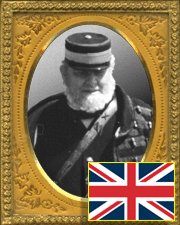
Military Observer's
Journal
 |
A Military Observer's Journal |
|
Military Observer’s Journal
Besieging Army -- The besieging army is usually divided into two Corps, one charged with the siege, the other with holding the surrounding country, for a short distance from the place. Sometimes the besieging army is covered by a Corps of Observation, in which case there is no necessity for its being so numerous as when it acts alone.
Siege Train -- The artillery necessary for the attack on a fortified place constitutes this equipage. The strength of the siege train depends upon the importance of the place to be attacked and the resources at hand. For besieging the strongest places, the French prescribe an equipage of:
40--24-Pd. guns 15--8.78" mortars
40--16-Pd (U.S. 18 Pd.) guns 12--Stone Mortars
40--8.78" Howitzers 12--5.95" Mortars
15--10.79" Mortars 60--Rampart Muskets
A double attack would require about 200 cannon. The largest guns and howitzers, and the smallest mortars should be provided with about 1,000 rounds of ammunition each. The large mortars with 750 rounds, and the stone mortars with 500 rounds.
In this country, where the permanent works are so different than those in Europe, it is difficult to lay down any positive rules for the formation of siege trains. The number and kind of pieces must be determined by the circumstances of each case, taking into consideration the strength, position, and condition of the place to be attacked. Permanent works can only be reduced by the heaviest siege pieces, such as the 18 and 24-Pd guns, 811 howitzers and mortars. The amount of ammunition will of course vary according to circumstances. If possible, the 18 and 24-Pdrs should be furnished with 1,000 rounds; the 12-Pders with a greater number. The 811 howitzers and mortars with 800 rounds, and the Coehorn and 1011 mortars with 600 rounds. In addition, each or the foregoing guns should be provided with 50 rounds of grape and canister, and 100 rounds of spherical-case shot.
Reference:
Colin White, Victoria's Navy. The End of the Sailing Navy, 1981, Kenneth Mason--Hampshire, England, Pages 132-133.
© 1999, James Mathews, all rights reserved. Contact Mr Mathews for permision to reproduce.
Return to the main Société d'Europe page
Return to the table of contents for "A Military Observer's
Journal"
Links to web sites related to this topic:
Society Web Page for James Mathews
The Adventures of Ian McKay